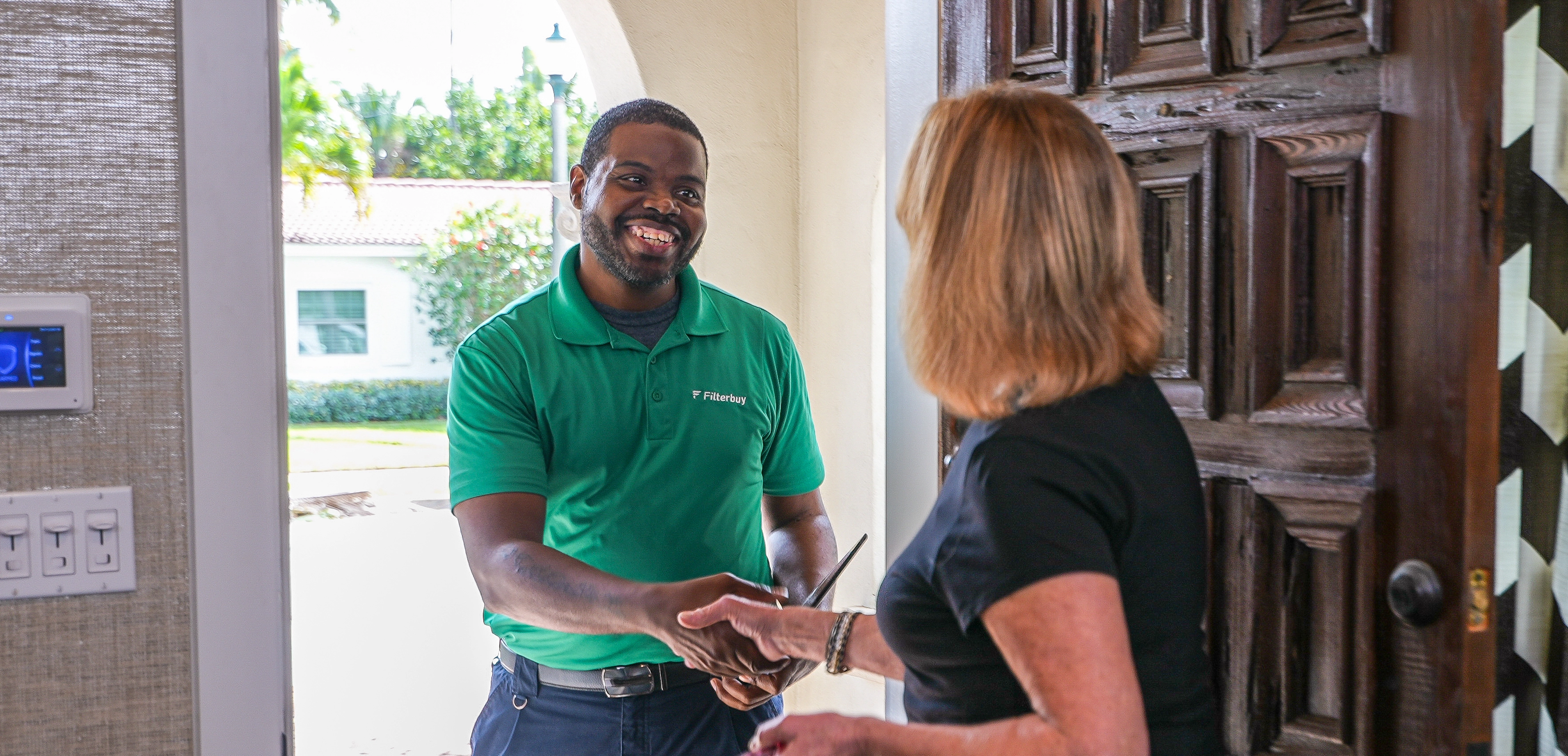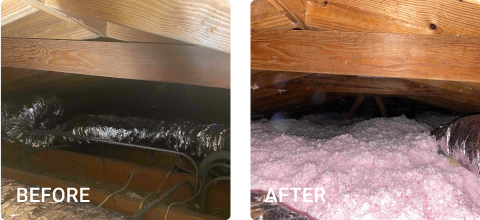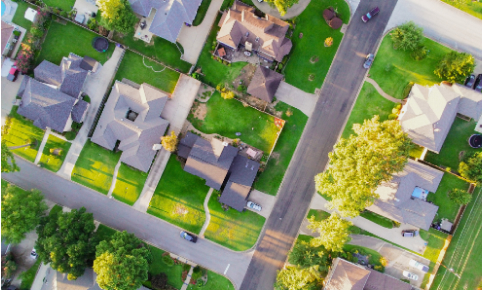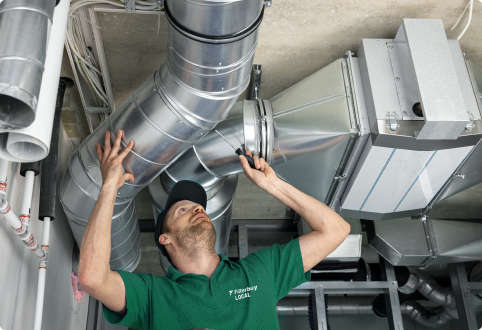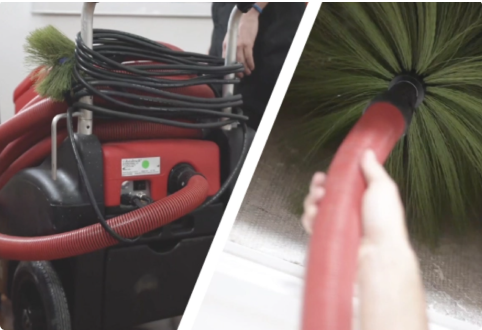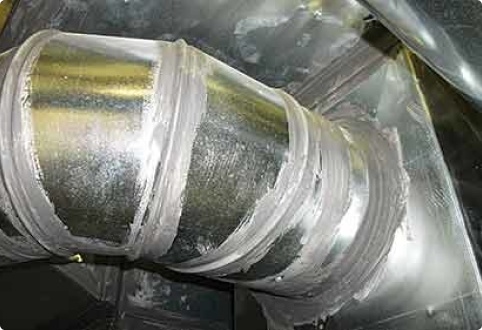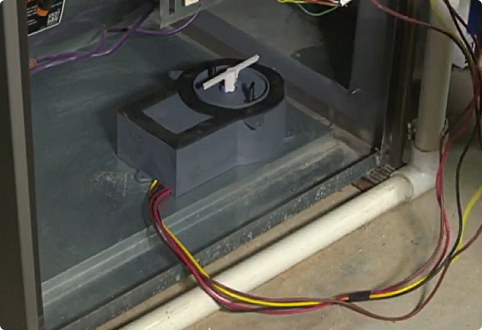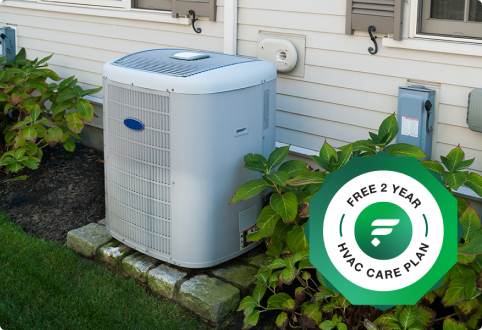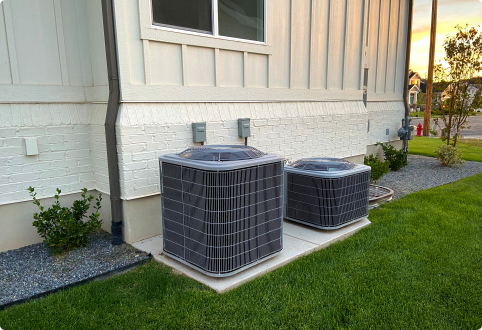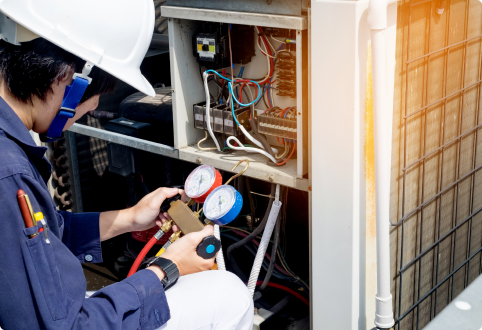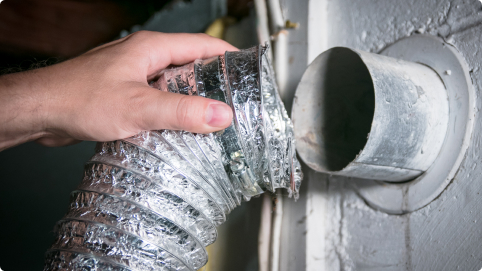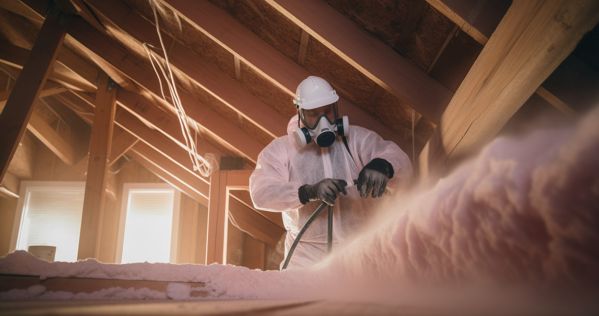Welcome to Filterbuy HVAC Solutions, the best attic insulation installation service company proudly serving in and near the greater North Miami Beach, FL area. Please let us know how we can help solve your North Miami Beach attic insulation installation needs with professional, affordable and fast residential and commercial HVAC services by getting a free online quote or by giving our friendly HVAC specialists a call. We look forward to hearing from you!
Attic Insulation Installation Services in North Miami Beach FL
Attic insulation installation services in North Miami Beach, Florida provide important benefits for property owners. These services improve the energy efficiency of a home or business and reduce long-term costs associated with climate control. This article will provide an overview of attic insulation installation services available in North Miami Beach, FL, including the types of materials used, cost considerations, and overall process.
Attic insulation is one of the most cost-effective ways to increase energy efficiency within a property. By properly insulating the attic space, it can prevent conditioned air from escaping through gaps or cracks and from leaking out into unconditioned areas such as attics and crawl spaces. Additionally, proper insulation helps maintain consistent temperatures throughout the entire building by reducing temperature transfer between rooms due to poor sealing around doors or windows. As a result, buildings are more comfortable while also consuming less energy to achieve desired indoor temperatures.
The quality of attic insulation varies depending on what type of material is used in its construction; common options include fiberglass batt insulation, loose-fill cellulose insulation, blown-in fiberglass insulation, and spray foam insulation. Each option has its own advantages and disadvantages that must be considered when making a decision about which product best meets the needs of each individual project. In addition to choosing the appropriate material for a particular application, other factors should be taken into consideration such as labor costs associated with installation and any additional equipment required for certain applications like safety harnesses for working at heights.
Benefits Of Insulating Attics
The decision to insulate attics is a wise one that can bring many advantages. It is becoming increasingly popular among homeowners due to its numerous benefits. One of the primary motivators for investing in attic insulation is improved energy efficiency, which brings about cost savings on utility bills over time. Additionally, properly insulated attics provide greater comfort and better air quality throughout the home.
Insulation works by trapping heat within the walls of buildings or homes, thereby reducing the amount of energy needed to maintain comfortable temperatures indoors during both cold and hot weather. Furthermore, it prevents moisture from entering walls and ceilings, significantly decreasing the risk of mold growth and structural damage caused by water infiltration. In addition, it helps reduce noise levels inside the house, providing occupants with peacefulness and tranquility at all times.
Attic insulation also has a positive impact on one's health as it blocks pollen particles, dust mites, and other allergens commonly found in uninsulated spaces from entering living areas. This way, individuals who suffer from respiratory issues such as asthma may find some relief when their attics are appropriately sealed off from outside elements.
Types Of Attic Insulation
Attic insulation is an essential component of a home’s energy efficiency. Depending on the climate and individual needs, homeowners can choose from several types of insulation to install in their attic. Some common materials for attic insulation include fiberglass batts, cellulose, foam board, rigid foam, and spray foam.
Fiberglass Batts are one of the most popular options as they are made from recycled glass pieces that have been spun into strands and woven together with binder material. They come in pre-cut lengths which makes installation easy. Cellulose is another commonly used type of insulation due to its affordability and eco-friendly nature; it consists primarily of paper fibers treated with fire retardants and other agents for durability.
Foam Board or Rigid Foam insulation is often placed directly against wall studs or ceiling joists as opposed to being installed between them; this type typically contains polystyrene beads encapsulated by plastic films and offers superior protection against air leakage and heat transfer. Spray Foam Insulation is also available but should be applied professionally as the incorrect application may lead to structural damage or even health risks from off-gassing chemicals released during the curing process.
Attic insulation can help improve home comfort while reducing heating and cooling costs over time; however, proper selection and installation must be considered before starting any project.
Pre-Installation Checklist
Installing attic insulation is like a game of chess – there are multiple steps that must be taken in order for the project to be successful. To ensure an efficient and effective installation, it is important to complete a thorough pre-installation checklist before beginning the professional installation process.
This article will cover:
1. The items needed for pre-installation
2. The importance of assessing existing conditions
3. Strategies for preventing potential problems
Before installing new insulation, homeowners should have all necessary materials on hand. These include safety equipment such as goggles, masks, and gloves; tools like ladders, saws, and drills; protective covers or tarps; sealants; fasteners; and, of course, the appropriate amount of insulation material. It's also helpful to understand how much coverage is needed in the space being insulated prior to starting the job. Once these supplies are secured, then the proper assessment can begin.
It’s essential to inspect existing attics for any signs of damage both from water intrusion and structural instability before attempting any kind of insulation work. Additionally, check places where pipes, vents, and wires come into contact with framing elements around windows or doors that could potentially create air leakage points when covered up with insulation. Taking precautionary measures now can save time later by eliminating issues down the road.
Finally, strategize methods for avoiding any additional complications during the project itself. For example, plan ahead so that power sources remain accessible after installation without having to remove large amounts of insulation each time repairs need to be made or electrical components serviced. Careful consideration beforehand pays off later by ensuring a safe environment while preserving energy efficiency levels once completed. With this preparation complete, homeowners can move forward confidently with their attic insulation project knowing they are well prepared for success.
Professional Installation Process
The professional installation process begins with the initial assessment of the attic space. An experienced technician will inspect the space, taking into consideration factors such as size and accessibility, insulation type and R-value estimates, ventilation requirements, potential moisture issues, and any other existing conditions that could affect installation. Following the inspection, a detailed plan is developed outlining all materials needed for an effective attic insulation system.
Next comes the actual installation of the material. The technician will take care to follow manufacturer instructions when installing batt or loosefill insulation in order to achieve optimal results. Where applicable, vapor barriers are laid out according to code before insulation is installed. Additionally, attention is paid to ensuring proper ventilation and airflow within the space.
Once complete, technicians test for adequate coverage by using measuring devices such as blower machines or infrared cameras; these tests help identify any areas where more insulation might be necessary. Upon successful completion of this final step, clients can rest assured their attics have been properly insulated and sealed against energy loss or water damage caused by airflow problems. This concludes the professional installation process which covers attics in North Miami Beach FL.
Areas Covered In North Miami Beach FL
Attic insulation installation services are available for North Miami Beach FL and its surrounding areas. Residents of this vibrant city have access to experienced professionals who can help them with their attic insulation needs. From Palm Springs Mile to the Golden Glades, from Biscayne Boulevard to Bal Harbour Shops – no matter where you live in North Miami Beach, quality service is just around the corner. Experienced technicians utilize state-of-the-art equipment and materials to ensure a safe and efficient job every time. Whether it's blown insulation or batt insulation that you need, reliable contractors will be able to provide the right solution for your home.
Apart from attics, these professional installers also specialize in working on crawl spaces, walls, floors, and other areas that require additional protection against temperature fluctuations. They understand how important it is to properly insulate such spaces since they are more vulnerable than regular living rooms when it comes to extreme temperatures. The use of high-quality materials guarantees long-lasting results while keeping energy bills low. In addition to providing superior insulation services, many contractors also offer comprehensive advice on which type of material would best suit each individual job so clients get exactly what they need without any guesswork involved.
The range of expertise offered by these companies makes sure that customers receive top-notch service regardless of the size or complexity of their projects. With years of experience handling everything from small residential jobs up to large commercial ones, there’s no doubt that customers in North Miami Beach FL can trust them with all their insulation needs.
Cost Estimation And Financing Options
When it comes to attic insulation installation projects, cost estimation, and financing options are important considerations. Accurately estimating costs helps homeowners plan for the project while understanding the available financial support can help them organize their resources. This section will discuss both aspects of the attic insulation process in North Miami Beach FL.
The first step in any insulation installation is obtaining an accurate estimate of the materials needed as well as the labor involved. Most companies offer free estimates that outline all necessary materials and services, such as delivery fees or disposal fees if applicable. Additionally, many contractors have specialized software programs that accurately calculate how much material needs to be purchased based on measurements taken from a home’s attic space. In some cases, these estimates may include additional charges for tax and/or permit-related expenses.
Homeowners should also consider financing options when budgeting for an attic insulation project. Several lending institutions provide loans specifically tailored towards energy efficiency improvements such as this one; though rates vary by institution, most offer competitive terms with minimal down payments required upfront. Furthermore, there are government-sponsored grants and/or rebates available at the local or state level which could further offset costs associated with installing attic insulation. Homeowners should contact their utility provider or regional office to learn more about what assistance they qualify for before beginning any work.
The advantages of professional installation services include not only quality assurance but also time savings; hiring an experienced contractor eliminates the hassle and ensures excellent results within a shorter timeframe than would otherwise be possible with DIY methods.
Advantages Of Professional Installation Services
Attic insulation installation services offer many advantages over DIY installations. For starters, professional installers have the necessary expertise and experience to ensure that the attic is properly insulated with a quality product from start to finish. Furthermore, they can provide valuable advice on what type of insulation material would be best for your home's specific needs. Professional installers also take safety precautions seriously and will follow all local building codes when installing insulation in an attic space.
Here are some key advantages of using professional installation services:
1. Properly trained professionals who understand how to safely handle materials and follow local building codes
2. Quality products installed correctly, ensuring optimal energy efficiency
3. Time savings due to experienced crew completing the job quickly and efficiently
Professional installers provide peace of mind knowing that you're getting a superior result compared to attempting the job yourself. Additionally, any questions or problems that may arise during or after the installation can easily be addressed by a knowledgeable expert right away instead of having to research it on your own. With these benefits combined, hiring a professional installer is often well worth the extra cost.
Safety Aspects For Installing Attic Insulation
Safety is paramount when installing attic insulation. Improperly installed insulation can be hazardous to both the installer and any inhabitants of a home, potentially resulting in electric shocks, fires, or even structural damage. To ensure safety during installation, homeowners should first have their attics inspected by a qualified professional. This ensures that all potential hazards such as exposed electrical wiring or inadequate support beams are identified prior to beginning work. It also allows for proper ventilation of the space which prevents overheating and reduces moisture levels.
Once it has been established that an attic is safe for insulation installation, workers must take extra precautions against falls from ladders or scaffolding while working at elevated heights. Harnesses with ropes attached to secure objects must be used when transporting heavy materials into the attic via ladder access points. Additionally, personal protective equipment including hard hats, safety goggles, gloves, and dust masks should always be worn to reduce the risk of injury.
It is important to remember that improper use of power tools such as drills or saws can lead to serious injuries if not handled properly. All power cords should remain clear of any areas where the material will be cut and personnel must ensure they stay aware of their surroundings at all times throughout the job. Taking these steps helps protect those involved in the process from accidental harm due to carelessness or lack of preparation on site. With adequate planning and appropriate safety measures put into place ahead of time, attic insulation installations can proceed smoothly without incident.
Maintenance Tips For Long-Lasting Insulation
Proper maintenance of attic insulation is essential for long-lasting performance. To help ensure that the insulation remains in good condition, homeowners should conduct regular inspections and address any issues as quickly as possible. It is important to be aware of the type of insulation installed, as there are different ways to maintain each one. Regularly dusting off fibers or vacuuming up particles can keep loose-fill and batt insulations clean. Spray foam insulation may require more frequent attention due to its tendency to absorb moisture; water damage could cause it to break down over time. Additionally, checking around pipes and wires for any signs of rodent infestation is also recommended.
Homeowners should take steps to prevent condensation from occurring within the attic space by ensuring proper ventilation exists throughout the area. This can be done by installing soffit vents along with other types of air intake systems such as ridge vents and gable end vents. Furthermore, if recessed lighting fixtures were added during installation, they must have appropriate thermal covers installed in order to avoid heat buildup inside the attic. Taking these steps will not only prolong the life of the insulation but will also reduce energy costs associated with maintaining a comfortable home environment year-round.
In addition, it may be beneficial for homeowners to seek out professional assistance when dealing with larger-scale repairs or replacements of their existing attic insulation system. Home improvement assistance programs exist which offer financial aid towards these projects in some areas where eligible participants meet certain criteria based on income levels or property location requirements.
Home Improvement Assistance Programs
Home improvement assistance programs provide support to homeowners who are unable to pay for certain home improvements. These programs offer various opportunities, from grants and loans to tax rebates that can help make the cost of renovations more affordable.
Grants are available in some states for those looking to repair or upgrade their homes. Grants may be used for a variety of needs such as installing energy-efficient features, repairing roofs and walls, improving accessibility, or installing safety systems. Loans are also an option for financing home repairs and upgrades. The availability of these loan types varies depending on location and creditworthiness; typically, interest rates range between 3% - 6%. Tax incentives may also be applicable when making certain home renovation projects eligible for deductions at the end of the year. Lastly, local governments sometimes partner with nonprofits to provide funding specifically dedicated to helping people with low income improve their homes.
In order to benefit from any of these options it is important to research thoroughly all potential sources of assistance before starting a project. Additionally, individuals should consider consulting professionals prior to beginning any remodeling work in order to ensure they receive full financial benefits and avoid future problems due to faulty construction or inadequate design choices.
Frequently Asked Questions
What Is the Most Cost Effective Way to Insulate an Attic?
Adding insulation to the attic is generally the most cost-effective way to improve energy efficiency in a home.
What Is the Code for Attic Insulation in Florida?
Florida building codes typically require a minimum R-value for attic insulation to ensure energy efficiency and comfort in homes.
What Is the Lifespan of Attic Insulation?
The lifespan of attic insulation can vary depending on the material used and the conditions it is exposed to, but it generally lasts for many years if properly installed and maintained.
Can You Put Too Much Insulation in Your Attic?
Yes, it is possible to put too much insulation in an attic, which can lead to issues such as moisture problems and reduced effectiveness of the insulation.
Can I Add Insulation to My Attic Myself?
Yes, adding insulation to an attic can be a DIY project for some homeowners, but it's important to follow proper installation techniques to ensure effectiveness.
What Is the Best Insulation for the Attic in South Florida?
The best insulation for an attic in South Florida may depend on factors such as the home's specific needs, budget, and local climate conditions.
What Type of Attic Insulation Is Best?
The best type of attic insulation depends on factors such as climate, budget, and personal preferences. Common options include fiberglass, cellulose, and spray foam insulation.
Will I Notice a Difference With Attic Insulation?
Properly installed attic insulation can lead to noticeable improvements in energy efficiency, indoor comfort, and potentially lower utility bills.
How Many Inches of Blown-in Insulation Should You Have in Your Attic?
The recommended amount of blown-in insulation for an attic is typically determined by the desired R-value, which can vary based on location and climate.
Do You Need 2 Layers of Insulation in Attic?
In some cases, adding multiple layers of insulation in an attic can improve energy efficiency, but it's important to ensure proper installation and avoid compressing the insulation.
Can You Put New Insulation Over Old Insulation in the Attic?
It is possible to add new insulation over old insulation in an attic, but it's important to assess the condition of the existing insulation and follow proper installation guidelines to avoid issues.
Which Way Should Insulation Face in an Attic?
Insulation in an attic should typically face the living space below to help maintain a consistent temperature and improve energy efficiency.
Here is the nearest branch location serving the North Miami Beach area…
Filterbuy HVAC Solutions - Miami FL
1300 S Miami Ave Unit 4806, Miami, FL 33130
(305) 306-5027
https://maps.app.goo.gl/tFxwnq7df9Dmse1J8

.webp)
.webp)
.webp)
.webp)






